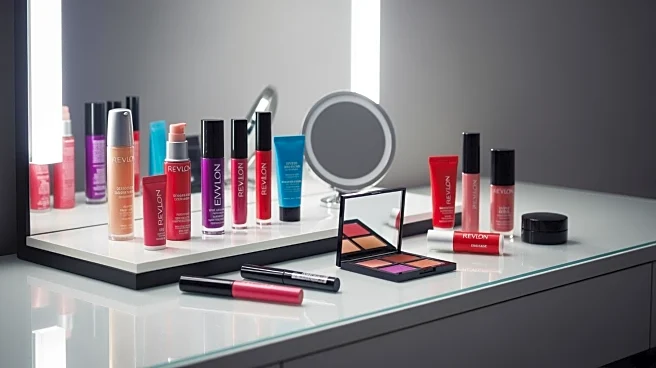What's Happening?
Revlon, a renowned beauty brand, is on a path to recovery following its bankruptcy filing in 2022. Under CEO Michelle Peluso, the company is focusing on modernizing its legacy brands while maintaining
their historical appeal. The strategy includes revitalizing core brands like Revlon and Elizabeth Arden, with an emphasis on brand storytelling and innovation. Revlon is leaning into 'bold glamour' with new collections, aiming to resonate with modern consumers. Financial stability is a cornerstone of this recovery, with Revlon managing its Days Beyond Terms (DBT) effectively, indicating strong cash flow management. Despite these efforts, Revlon faces challenges from competitive pricing pressures and shifting consumer trends, particularly from Gen Z.
Why It's Important?
Revlon's revival strategy is crucial for its survival in a rapidly evolving beauty industry. The company's focus on modernizing its offerings while maintaining brand heritage is essential to attract new consumers and regain market share. Effective financial management, particularly in supplier payments, is vital for sustaining operations and building trust with partners. However, Revlon must navigate competitive pressures from trend-driven brands and adapt to minimalistic beauty trends favored by younger consumers. Success in these areas could lead to a resurgence in Revlon's market presence, impacting its financial health and industry standing.
What's Next?
Revlon's future hinges on its ability to innovate and adapt to changing consumer preferences. The company must accelerate its responsiveness to trends and enhance its digital presence to appeal to Gen Z consumers. Continued financial discipline and strategic brand revitalization will be key to maintaining operational stability. As Revlon moves forward, it will need to balance nostalgia with modern innovation to secure its place in the beauty market. The next few years will be critical in determining whether Revlon can regain its former market dominance.











